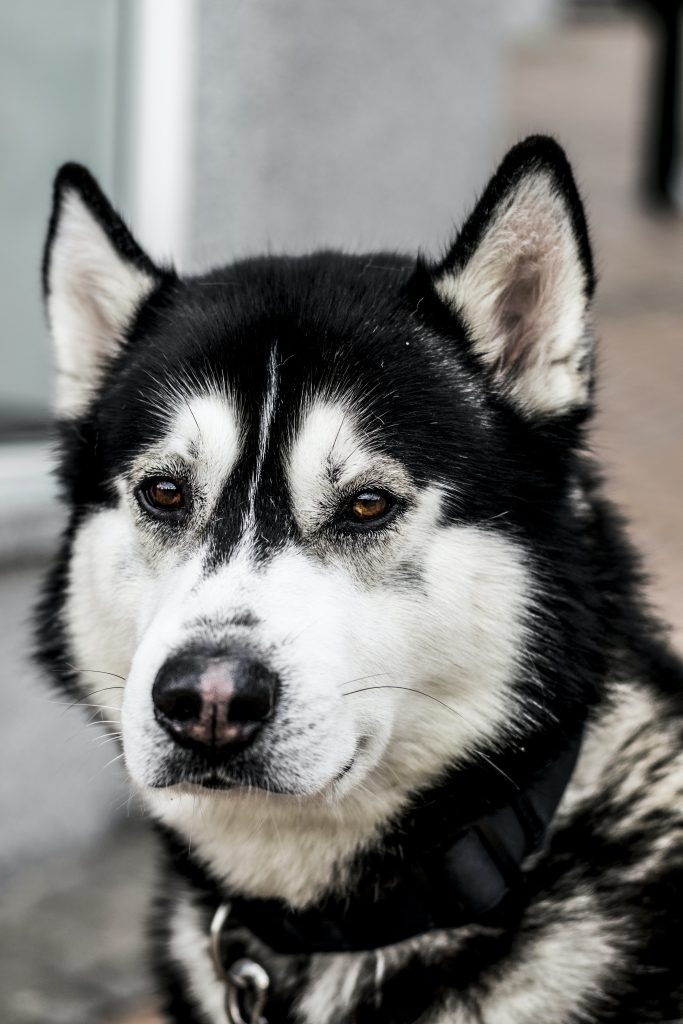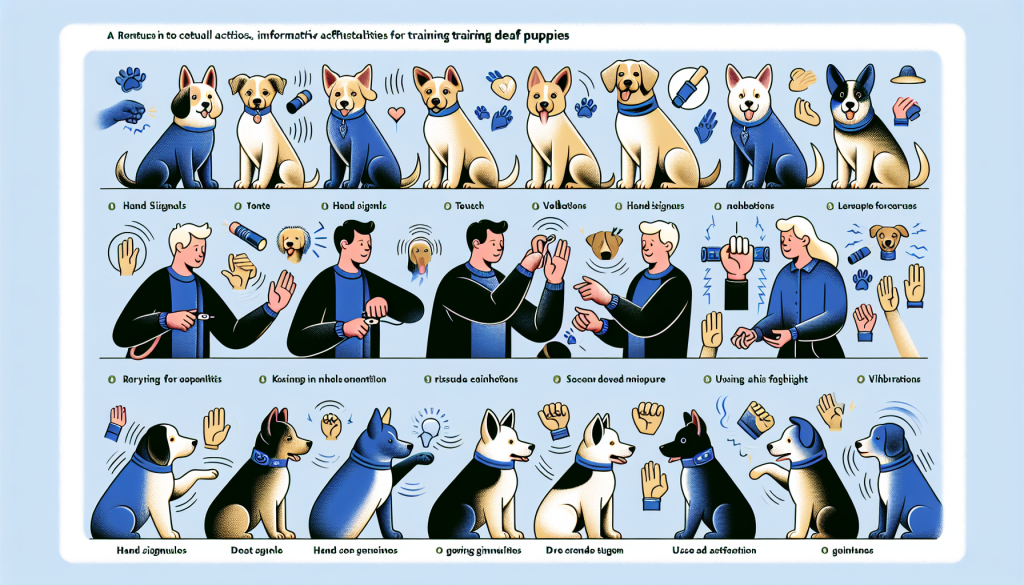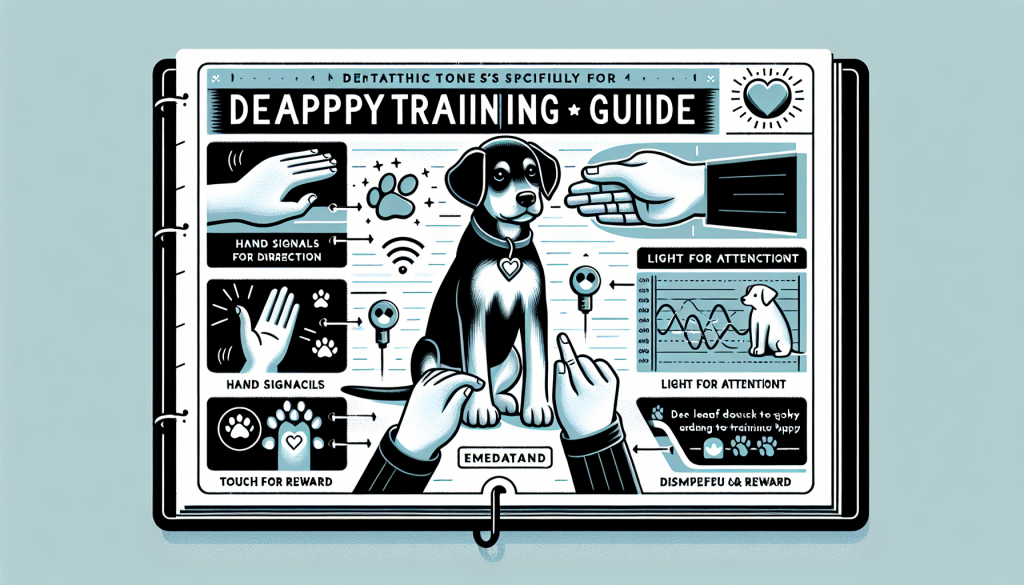Have you recently welcomed a furry friend into your family, only to discover that they are deaf? Training a deaf puppy may seem like a challenge, but with the right techniques and a little patience, you can create a strong bond and teach them commands just like any other pup. In this article, we will explore effective methods for training a deaf puppy, providing you with the tools you need to help them thrive in their new environment. So, let’s get started on this exciting journey of training your deaf puppy!

This image is property of images.unsplash.com.
Creating a Safe Environment
Remove Hazards
When training a deaf puppy, it’s important to create a safe environment by removing any potential hazards. Since they rely heavily on visual cues, make sure there are no objects or obstacles that could cause harm or distractions during training sessions. Clear the training area of any sharp objects or small toys that could be swallowed accidentally. By creating a hazard-free space, you can provide a secure environment where your puppy can focus and learn without any risks.
Provide Visual Cues
Since verbal commands won’t work with a deaf puppy, visual cues become essential for effective communication. Use hand signals to convey commands such as “sit” and “stay”. It’s important to establish consistent hand signals that you can easily replicate. Keep the signals clear and distinct, using different hand shapes or movements for each command. Utilizing visual cues ensures that your puppy understands what you’re asking of them and helps build a strong foundation for further training.
Establish a Routine
Establishing a routine is key to training a deaf puppy. Puppies thrive on consistency, and having a structured routine provides them with a sense of stability and security. Set specific times for training sessions, feeding times, and bathroom breaks. By following a regular schedule, your puppy will quickly learn what is expected of them and will be more motivated to learn and participate in training exercises.
Using Visual Communication
Use Hand Signals
Hand signals are a powerful tool when training a deaf puppy. By using consistent, clear, and deliberate hand gestures, you can effectively communicate commands. For example, for the command “sit,” you could raise your hand with an open palm, indicating your puppy should sit down. It’s important to stay patient and give your puppy enough time to understand and respond to the signals. Repeat the hand signals consistently, and always pair them with rewards and positive reinforcement to help reinforce the association between the signal and the desired behavior.
Incorporate Body Language
Alongside hand signals, incorporating body language can also aid in communication with your deaf puppy. Facial expressions, body posture, and movements can convey your intentions and emotions. For instance, leaning slightly backward with a relaxed posture can signal your puppy to come closer, while a firm and straight posture can indicate “stay.” Remember to be mindful of your body language, as dogs are incredibly perceptive and will pick up on even subtle cues. By combining hand signals with intentional body language, you can enhance your communication and create a stronger bond with your furry friend.
Positive Reinforcement Techniques
Reward-based Training
Positive reinforcement is an effective technique for training any puppy, including deaf ones. This method involves rewarding desired behaviors with treats, praise, or playtime. When your puppy correctly follows a command, immediately provide them with a reward to reinforce the behavior. You can utilize small, easily manageable treats specifically designated for training purposes. Remember to be consistent with your rewards and offer them promptly after the desired behavior occurs. Positive reinforcement not only encourages the desired behavior but also strengthens the bond between you and your puppy.
Clicker Training
Clicker training is a popular technique that can be adapted for deaf puppies. Instead of using a vocal command to signal the desired behavior, a clicker is used as a marker for correct actions. Start by associating the clicker sound with a reward, then introduce the clicker during training sessions. When your puppy performs the desired behavior, immediately click the clicker and follow up with a reward. This establishes a clear link between the clicker sound and the positive reinforcement. Clicker training can be particularly effective for deaf puppies, as the sound of the click can cut through the silence and provide instant feedback.
Teaching Basic Commands
Name Recognition
Teaching your deaf puppy to recognize their name is an important foundation for training. Begin by saying their name and then providing a reward when they turn towards you. Repeat this exercise multiple times until your puppy consistently looks towards you when you say their name. Once they’ve mastered name recognition, you can move on to teaching other commands.
Sit
Teaching your deaf puppy to sit is a crucial command that ensures their safety in various situations. To teach them, combine the hand signal for “sit” with a treat held above their head. As they naturally look up to reach for the treat, their backend will automatically lower into a sitting position. Immediately reward them with the treat and provide praise. Repeated practice will help them associate the hand signal with the action of sitting.
Stay
Teaching your puppy the command to “stay” is essential for their safety in potentially dangerous situations. Begin by having your puppy in a sitting position. Place your open palm, facing towards them, in front of their face while using the “stay” hand signal. Take a step back, maintaining eye contact, and wait for a few seconds. If your puppy remains in the sitting position, quickly return to them, praise them, and provide a reward. Gradually increase the distance and duration of the “stay” command, ensuring to praise and reward them for successfully maintaining their position.
Come
Teaching your deaf puppy to come when called is crucial for their safety and provides peace of mind. Begin in a quiet and secure environment, such as your home or backyard. Use a combination of hand signals and visual cues to indicate them to come towards you. Make sure to move in a crouched, welcoming position while using an encouraging tone. You can also use treats or toys to motivate them to come closer. Whenever they respond to the command and come towards you, reward and praise them generously. Consistent and positive reinforcement will help your puppy understand and quickly grasp the importance of the “come” command.

This image is property of images.unsplash.com.
Socializing Your Deaf Puppy
Exposing to Different Environments
Socializing your deaf puppy is crucial to help them adapt to different environments and situations. Gradually introduce them to various environments such as parks, busy streets, and different types of surfaces. Start with quieter and less overwhelming environments before gradually increasing the level of stimulation. Expose them to new sights, sounds, and smells, and reward calm and confident behavior. Encourage positive interactions and provide them with reassurance and support during these new experiences.
Introducing to Other Dogs and People
To ensure your deaf puppy develops healthy social skills, it’s important to introduce them to other dogs and people. Arrange controlled, positive interactions with well-socialized dogs and individuals who understand and respect the needs of a deaf puppy. Start with quiet, calm dogs and gradually progress to more energetic and playful ones. Always supervise the interactions and be ready to intervene if necessary. Positive experiences with other dogs and people will help your puppy build confidence, reinforce social skills, and create a strong foundation for their future interactions.
Addressing Common Behavior Issues
Excessive Barking
Deaf puppies might resort to excessive barking as a means of communication. To address this behavior, it’s important to understand the underlying reasons behind it. Identify any triggers that cause the excessive barking, such as boredom or anxiety. Engage in mentally stimulating activities and provide plenty of physical exercise to keep your puppy occupied and content. Additionally, redirect their attention by introducing appropriate chew toys or puzzles. If the excessive barking continues, consider consulting a professional trainer who can provide further guidance and support.
Chewing or Digging
Chewing and digging are natural behaviors for puppies. To prevent destructive chewing and digging, provide appropriate outlets for their energy and natural instincts. Ensure they have access to a variety of chew toys, puzzle toys, and interactive games to keep them mentally and physically stimulated. Additionally, provide a designated digging area filled with soft soil or sand to redirect their digging instincts. Consistency is key, so redirect them to their designated toys or digging area whenever they engage in unwanted chewing or digging behavior.
Jumping Up
Jumping up is a common behavior issue that can be addressed through training and positive reinforcement techniques. Teach your deaf puppy an alternative behavior, such as sitting when they greet people. Practice this command in controlled environments until they consistently offer the desired behavior. Reward and praise them when they remain seated during greetings. Similarly, instruct your visitors to avoid rewarding the jumping behavior and instead wait for your puppy to sit before giving them attention or treats. Consistency and positive reinforcement will help your puppy understand that sitting is the preferred behavior.

This image is property of images.unsplash.com.
Building Trust and Bonding
Establish Eye Contact
Establishing eye contact is crucial for building trust and clear communication with your deaf puppy. Always ensure you have their attention before assigning a command or initiating an interaction. Gently tap on the ground or floor to get their visual attention, and once you have their focus, maintain eye contact throughout the training session or interaction. This will help your puppy understand your intentions and encourages a deeper bond between you.
Physical Touch
Physical touch is a powerful way to bond with your deaf puppy. Regularly engage in gentle grooming sessions, such as brushing or massaging them, to build trust and positive association with touch. Additionally, incorporate regular cuddle or petting sessions to strengthen the bond and provide reassurance. Be mindful of your puppy’s comfort level and always respect their boundaries. Gradually increase the intensity and duration of physical touch as your puppy becomes more comfortable and trusting.
Playtime and Exercise
Engaging in regular playtime and exercise sessions is not only important for physical health but also for building a strong bond with your deaf puppy. Incorporate interactive games such as fetch or hide-and-seek, ensuring to use visual cues and hand signals to communicate during playtime. Tailor the activities to suit your puppy’s energy level and offer mental stimulation to keep them engaged. Play and exercise sessions are not only opportunities for physical activity but also provide valuable one-on-one time to strengthen your bond.
Utilizing Vibrations and Pheromones
Vibration Collars
Vibration collars can be a useful tool to communicate and get your deaf puppy’s attention in certain situations. These collars emit gentle vibrations that your puppy can feel on their neck, serving as a tactile cue. You can associate specific vibrations with different commands or actions, such as a short buzz to signal them to come or a longer vibration to indicate “stay.” Always pair the vibration with a hand signal and reinforce the correct response with rewards and praise. When used responsibly and with proper training, vibration collars can help bridge the communication gap and enhance training effectiveness.
Pheromone-based Training Aids
Pheromone-based training aids, such as diffusers or sprays, can provide a calming effect on your deaf puppy. These products emit synthetic versions of natural pheromones that help promote relaxation and reduce anxiety. By creating a calm and secure environment, these aids can support your deaf puppy during training sessions and help alleviate any stress they may experience. Follow the instructions provided by the manufacturer and consult with a veterinarian if you have any concerns or questions regarding pheromone-based training aids.

Consulting a Professional Trainer
Seeking Guidance and Support
Training a deaf puppy poses unique challenges, and seeking guidance and support from a professional trainer can be invaluable. A professional trainer experienced in training deaf or special needs dogs can provide you with tailored advice and techniques specific to your puppy’s needs. They can also help address any behavior issues, provide support during the training process, and offer personalized strategies to ensure your puppy’s success. Remember, it’s always beneficial to ask for help when needed and work together with a professional trainer to create a positive and successful training experience for your deaf puppy.
Enrolling in Obedience Classes
Enrolling your deaf puppy in obedience classes specifically designed for dogs with special needs can be an excellent way to enhance their training journey. These classes provide a structured environment where trainers with expertise in training deaf puppies can guide you through various training exercises and techniques. Not only does this allow your puppy to interact and socialize with other deaf dogs and their owners, but it also provides an opportunity for you to learn from experienced trainers and gain valuable insights into training methods specifically tailored for deaf puppies.
Patience, Persistence, and Love
Understanding Their Perspective
Training a deaf puppy requires patience, understanding, and empathy. Remember that they experience the world through visual cues and rely on your guidance and consistent communication. Put yourself in their paws and consider how they understand and interpret your actions. Stay calm, positive, and patient throughout the training process, and always celebrate even the smallest progress. By understanding their perspective, you can adapt your training methods and create a supportive and loving environment for your deaf puppy.
Consistency in Training
Consistency is vital when training a deaf puppy. From hand signals to routines, offering consistent cues and reinforcement helps your puppy understand and respond more effectively. Ensure that all family members and caregivers are on the same page and using the same commands and signals. Consistency provides clarity and helps your puppy develop a strong foundation for their training. By maintaining consistency throughout their training journey, you set your deaf puppy up for success and make training more efficient and enjoyable for both of you.
Celebrating Progress
Training a deaf puppy can sometimes feel challenging, but it’s important to remember to celebrate your puppy’s progress along the way. Every small achievement, whether it’s mastering a new command or overcoming a behavior issue, deserves recognition and praise. Celebrate your puppy’s successes with treats, praise, and playtime. Positive reinforcement not only strengthens their learning but also deepens the bond between you. By acknowledging and celebrating progress, you motivate your puppy to continue learning, build their confidence, and create a harmonious and loving relationship.
